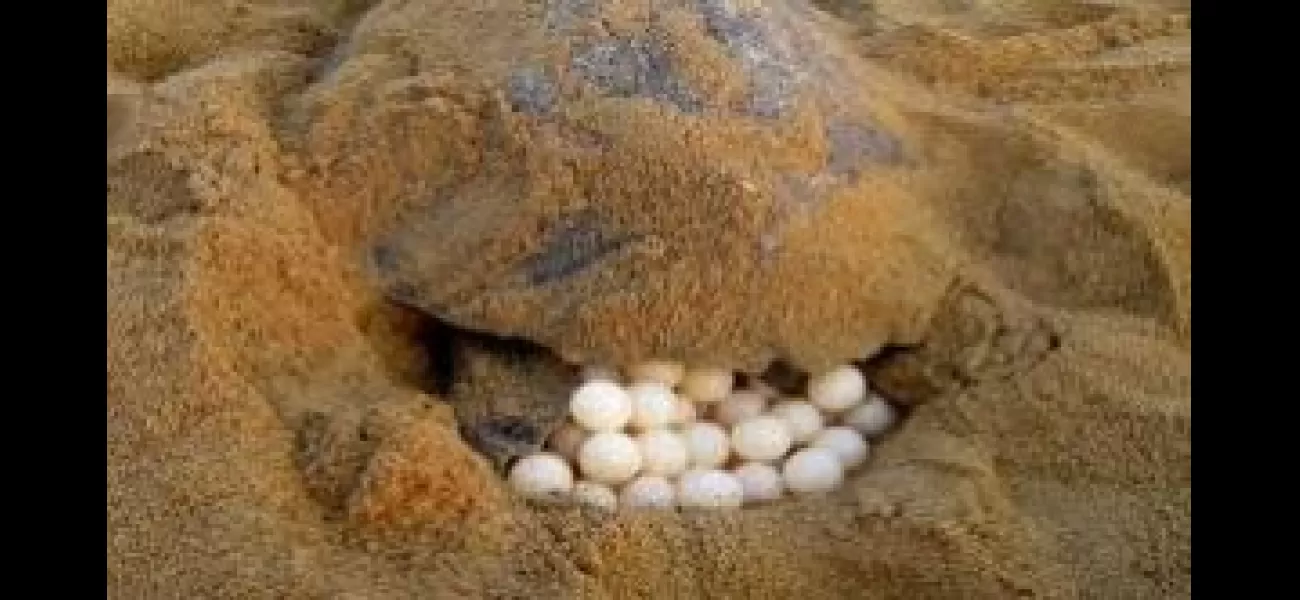The storm Remal causes destruction for Olive Ridley turtle eggs and young ones.
Cyclone Remal in Bay of Bengal has disrupted Olive Ridley turtle hatchlings at Nasi-2, the world's largest nesting site, due to severe weather and rain. DFO Sudarshan Gopinath Jadav confirms.
May 28th 2024.

In Kendrapara, a district in the Indian state of Odisha, the world's largest nesting site for Olive Ridley turtles, known as Nasi-2, has been heavily affected by the recent Cyclone Remal in the Bay of Bengal. The adverse weather conditions, including strong winds and heavy rain, have caused significant disruptions to the emergence of the turtle hatchlings.
According to Sudarshan Gopinath Jadav, the Divisional Forest Officer of Rajnagar Mangrove and Wildlife Division, the turbulent sea and high tides caused by the cyclone have washed away numerous turtle eggs. In addition, the incessant rain has also damaged the remaining eggs. Just three days ago, around 1.20 lakh hatchlings had emerged from their shells, but unfortunately, the current situation has halted the process.
Jadav explains that they are now in a "wait-and-watch" situation, hoping for the best but also acknowledging the possibility that the eggs may have been destroyed by the cyclone. The mass nesting process of the Olive Ridley turtles, where around 3 lakh turtles come ashore to lay their eggs, was also affected by the adverse weather.
The nesting ground at Nasi-2, located near the Defence Research and Development Organisation at Wheeler's Island, is usually a tranquil sandy spot where the turtles lay their eggs. However, due to the multi-layering of eggs in some areas, over 15% of the eggs were destroyed during the mass nesting. The turtles were seen digging the earth with their flippers and laying eggs on the same spot, which caused destruction to previously laid eggs.
Female Olive Ridley turtles typically lay 100-120 eggs at a time, in pits that they dig 2-3 feet deep with their rear flippers. After 45-55 days, the hatchlings emerge from the eggs and make their way to the ocean, creating a loud noise. Jadav explains that once hatched, the turtles use the Earth's magnetic field to guide them back to the same breeding areas when they become adults.
Unfortunately, the mortality rate of these endangered turtles is very high, with only one out of every 1,000 eggs surviving to become an adult turtle. Jadav also mentions that once the hatchlings reach the ocean, they disperse in ocean currents and rely on sargassum rafts and floating debris for food and shelter. It is a rare phenomenon where the babies grow without their mother's care.
In conclusion, the adverse weather conditions caused by Cyclone Remal have significantly affected the nesting and hatching process of Olive Ridley turtles at Nasi-2. While the situation is uncertain, officials and conservationists are closely monitoring the situation and hoping for the survival of these endangered species.
According to Sudarshan Gopinath Jadav, the Divisional Forest Officer of Rajnagar Mangrove and Wildlife Division, the turbulent sea and high tides caused by the cyclone have washed away numerous turtle eggs. In addition, the incessant rain has also damaged the remaining eggs. Just three days ago, around 1.20 lakh hatchlings had emerged from their shells, but unfortunately, the current situation has halted the process.
Jadav explains that they are now in a "wait-and-watch" situation, hoping for the best but also acknowledging the possibility that the eggs may have been destroyed by the cyclone. The mass nesting process of the Olive Ridley turtles, where around 3 lakh turtles come ashore to lay their eggs, was also affected by the adverse weather.
The nesting ground at Nasi-2, located near the Defence Research and Development Organisation at Wheeler's Island, is usually a tranquil sandy spot where the turtles lay their eggs. However, due to the multi-layering of eggs in some areas, over 15% of the eggs were destroyed during the mass nesting. The turtles were seen digging the earth with their flippers and laying eggs on the same spot, which caused destruction to previously laid eggs.
Female Olive Ridley turtles typically lay 100-120 eggs at a time, in pits that they dig 2-3 feet deep with their rear flippers. After 45-55 days, the hatchlings emerge from the eggs and make their way to the ocean, creating a loud noise. Jadav explains that once hatched, the turtles use the Earth's magnetic field to guide them back to the same breeding areas when they become adults.
Unfortunately, the mortality rate of these endangered turtles is very high, with only one out of every 1,000 eggs surviving to become an adult turtle. Jadav also mentions that once the hatchlings reach the ocean, they disperse in ocean currents and rely on sargassum rafts and floating debris for food and shelter. It is a rare phenomenon where the babies grow without their mother's care.
In conclusion, the adverse weather conditions caused by Cyclone Remal have significantly affected the nesting and hatching process of Olive Ridley turtles at Nasi-2. While the situation is uncertain, officials and conservationists are closely monitoring the situation and hoping for the survival of these endangered species.
[This article has been trending online recently and has been generated with AI. Your feed is customized.]
[Generative AI is experimental.]
0
0
Submit Comment





